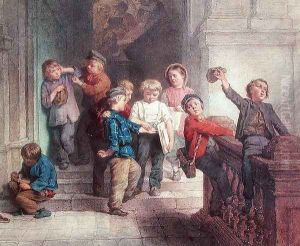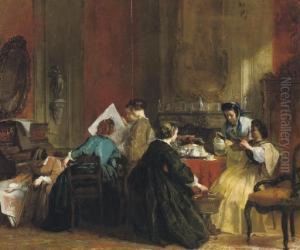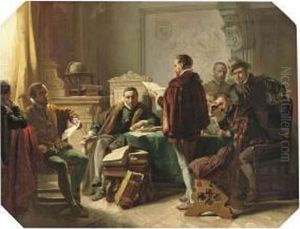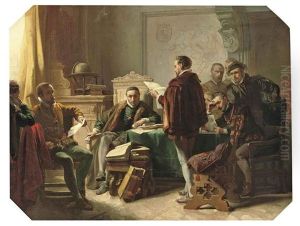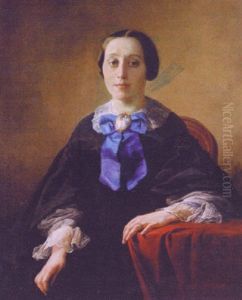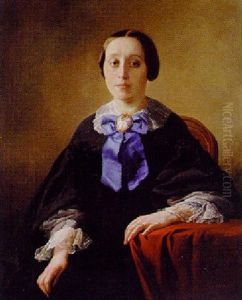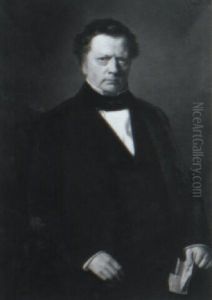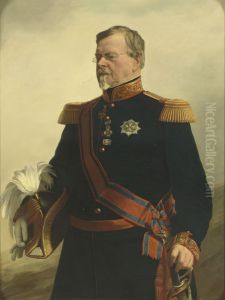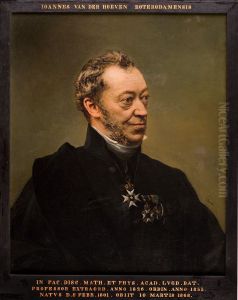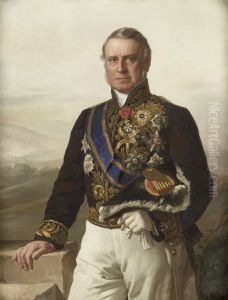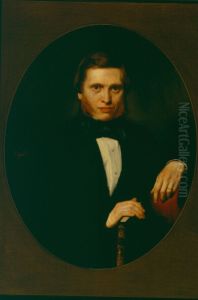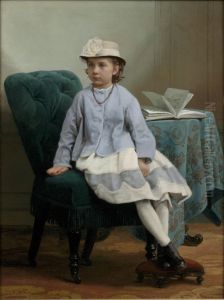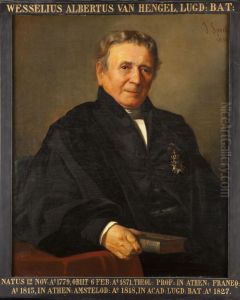Jacob Spoel Paintings
Jacob Spoel was a Dutch painter and lithographer who lived during the 19th century. Born on December 19, 1820, in Haarlem, Netherlands, Spoel was primarily known for his genre scenes and portraits. Although not as widely recognized as some of his contemporaries, he made a significant contribution to the Dutch artistic scene of his time.
Spoel's artistic journey began at the Royal Academy of Fine Arts in Amsterdam, where he studied under the tutelage of the renowned professor and artist Jan Adam Kruseman. Kruseman was known for his portraits, and his influence is evident in Spoel's own work. After completing his studies, Jacob Spoel embarked on a career as a fine artist, embracing the rich tradition of Dutch painting that had been established by the Old Masters.
Throughout his career, Spoel exhibited a keen interest in capturing the everyday life of his countrymen. His genre paintings often depicted scenes from Dutch social life, including its cafes and domestic environments. These works were characterized by a fine attention to detail and a warm, realistic portrayal of his subjects. Spoel's lithographs also gained attention, and he was known for his skill in this medium as well, which was a popular form of art reproduction at the time.
Despite his talents, Jacob Spoel remained a relatively modest figure in the art world. His works did not achieve the same level of fame as those of some of his peers. However, his paintings and lithographs have been appreciated for their historical value, providing insight into the cultural and social life of the Netherlands during the 19th century.
Jacob Spoel's life was cut short when he passed away on February 3, 1868, in Haarlem. Although his career was not lengthy by some standards, his contributions to Dutch genre painting have ensured that he remains a respected figure among those who study the art of the Netherlands during his era. His works can be found in various Dutch museums, where they continue to be studied and enjoyed by art enthusiasts and historians alike.
